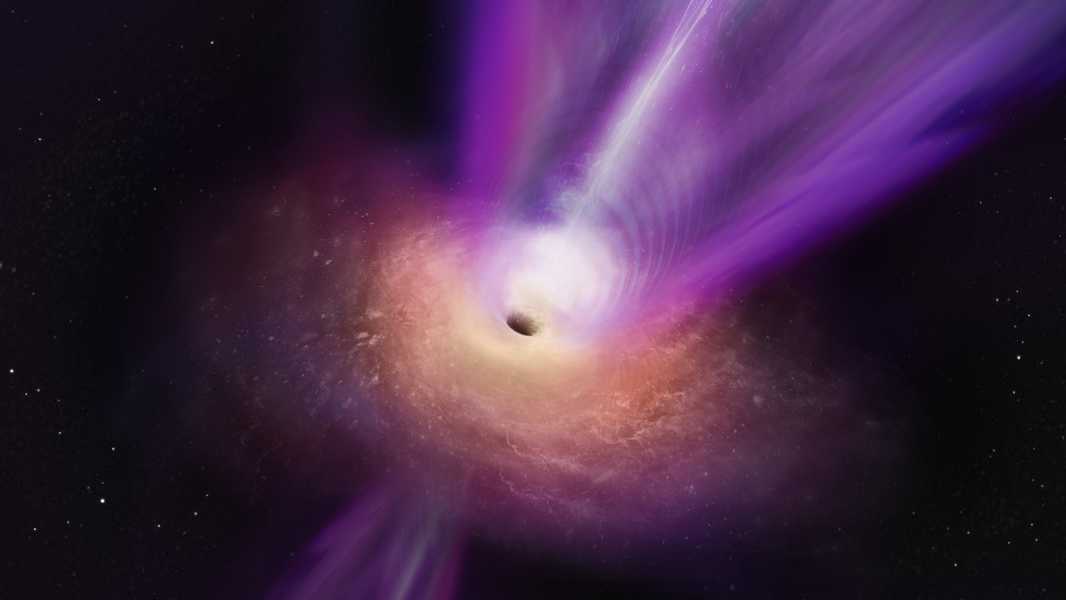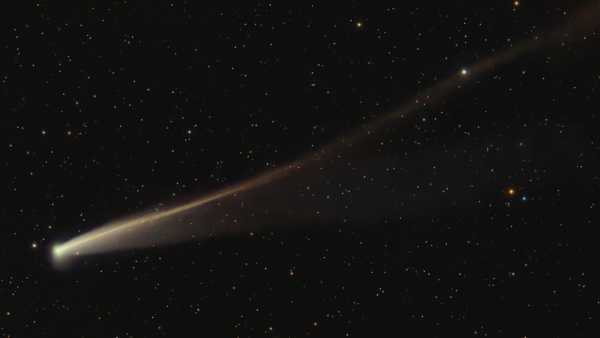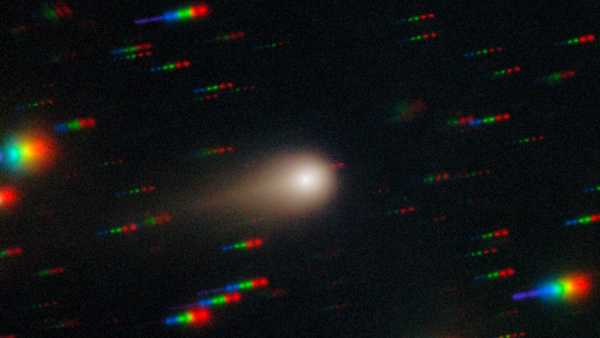
(Image credit: S. Dagnello (NRAO/AUI/NSF), CC BY-SA)
One of the most powerful objects in the universe is a radio quasar – a spinning black hole that spews out high-energy particles. If you get too close to one, you’ll be captured by its gravitational field or incinerated by the intense heat around it. But the irony is that studying black holes and their jets can give scientists insight into where potentially habitable planets might exist in the universe.
As an astrophysicist, I have spent two decades modeling the rotation of black holes, how they create jets, and how they affect the surrounding cosmic environment.
What are black holes?
Black holes are massive astrophysical objects that use gravity to attract surrounding bodies. Active black holes are surrounded by a disk-shaped structure known as an accretion disk, which contains hot, charged gas.
The plasma that makes up the accretion disk comes from distant regions of the galaxy. When two galaxies collide and merge, gas is forced into the central region of the process. Some of this gas ends up near the newly formed black hole and forms the accretion disk.
At the center of every large galaxy is a single supermassive black hole.
Black holes and their disks can rotate, and when they do, they distort space and time—a concept that is both astonishing and very difficult to understand. However, black holes are important to study because they produce enormous amounts of energy that affects galaxies.
The energy level of a black hole depends on a variety of factors, including its mass, its rotation rate, and the amount of material falling onto it. Mergers help feed the most powerful black holes, but not all black holes gain gas from mergers. For example, spiral galaxies typically have less gas to funnel into the center, and the central black hole tends to have less energy.
One way they generate energy is through so-called “jets” of high-energy particles. A black hole can capture magnetic fields and high-energy particles surrounding it, and as the black hole rotates, the magnetic fields twist into a jet that shoots out high-energy particles.
Magnetic fields wrap around the black hole as it spins, storing up energy — like pulling and twisting a rubber band. When you release the rubber band, it shoots forward. Magnetic fields similarly release their energy, creating these jets.
Sourse: www.livescience.com





